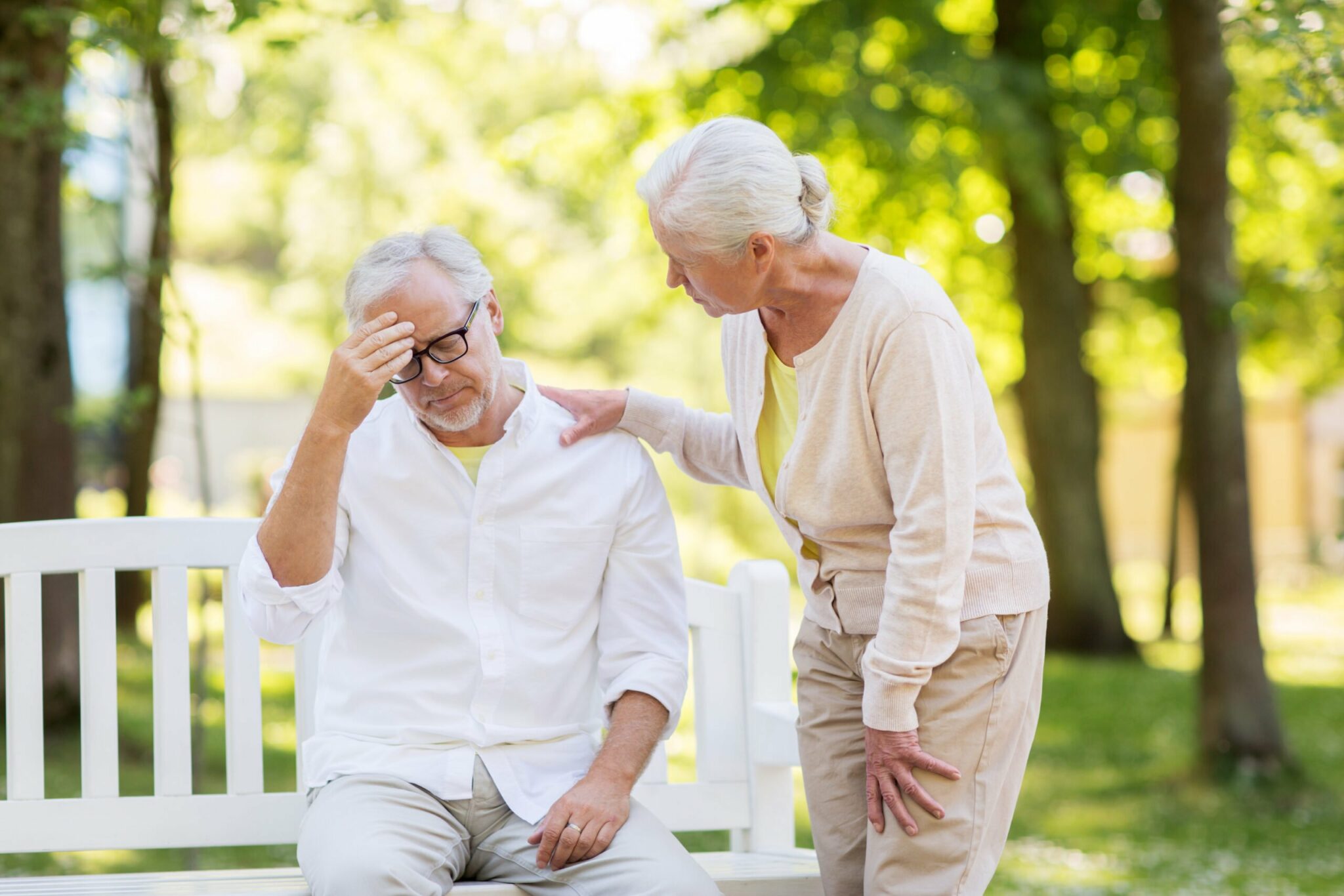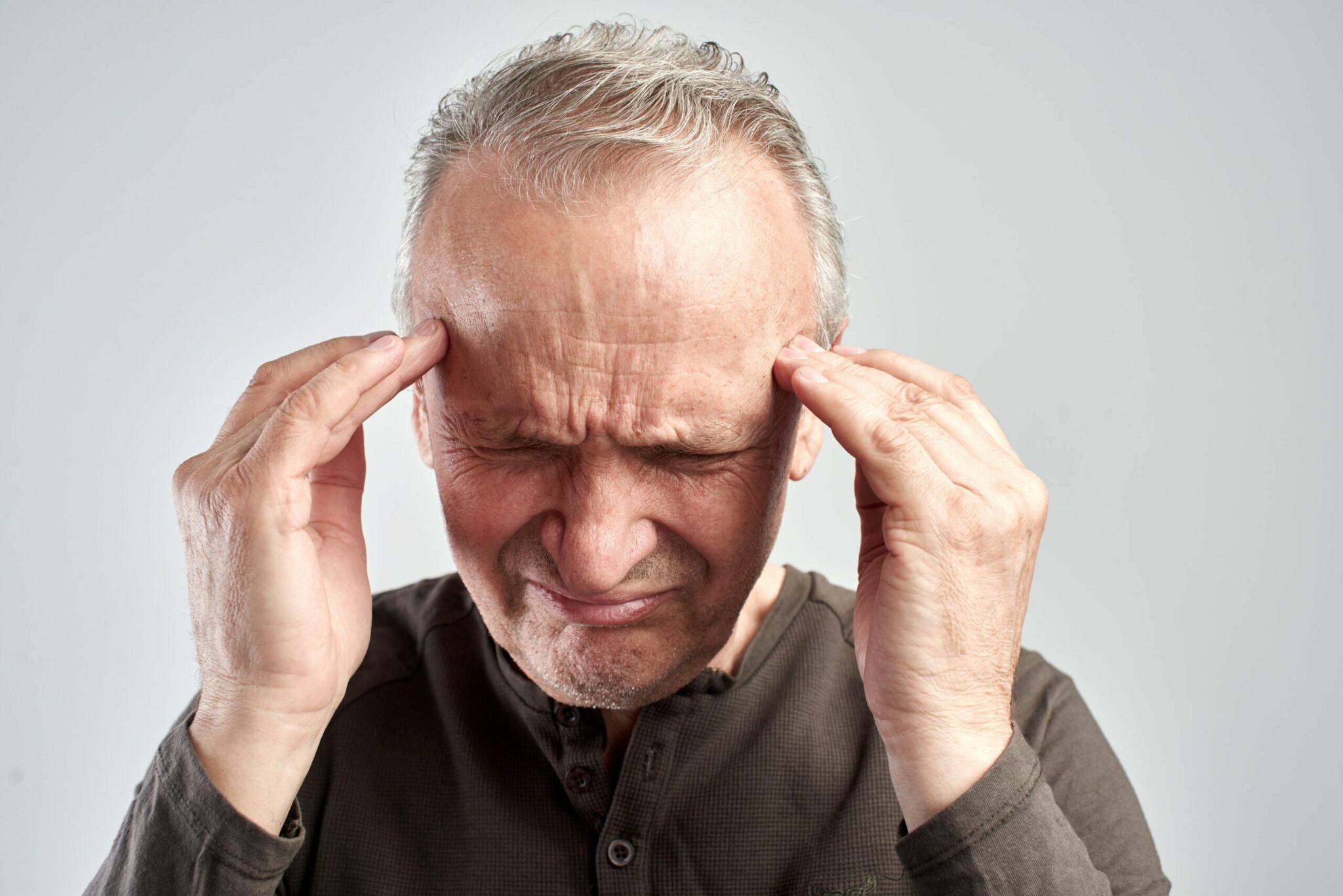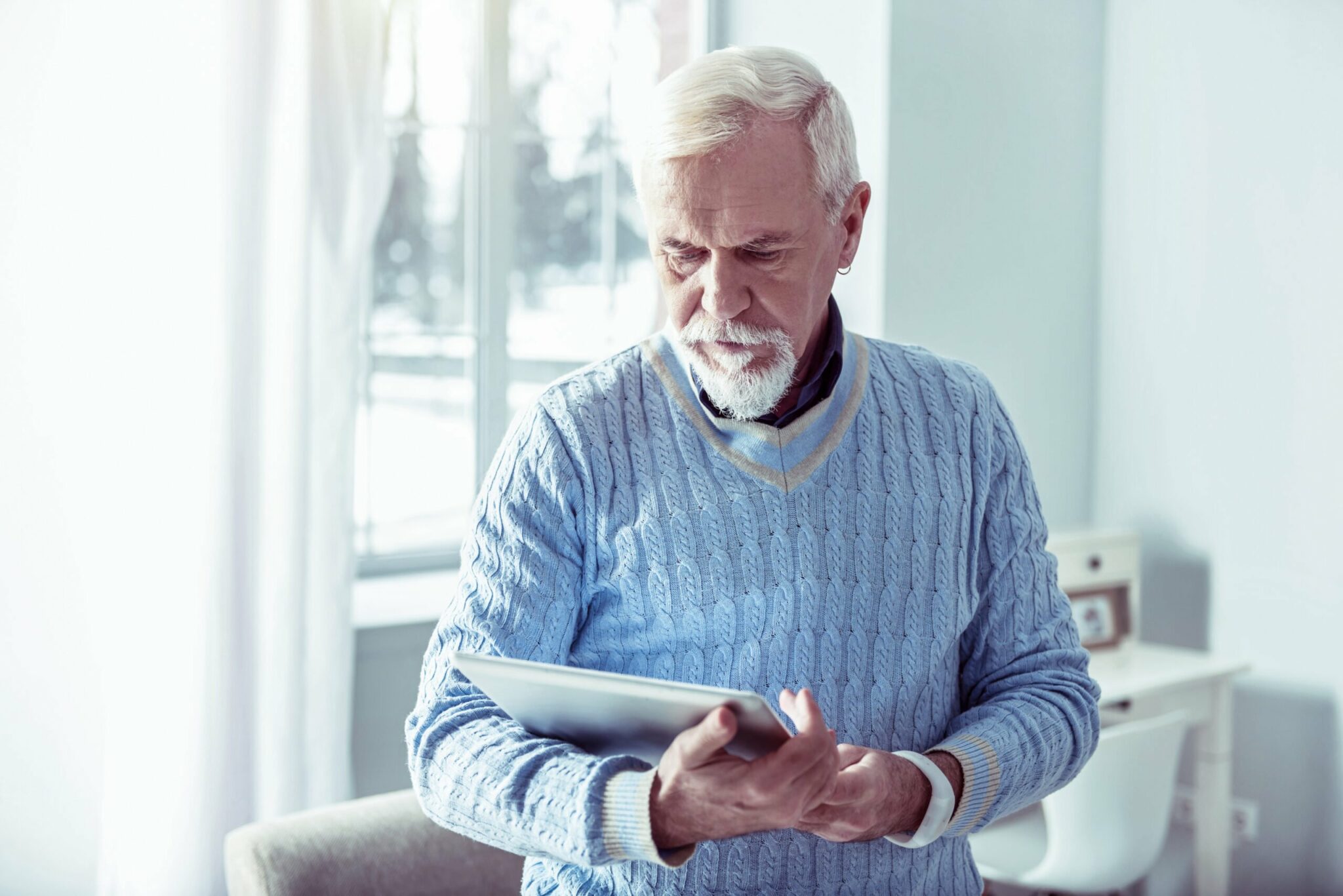Parkinson’s disease is characterized by a collection of uniquely distinguishing symptoms that affect movement and a number of other aspects of daily life. These include, but are not limited to, tremors, slowed movement (bradykinesia), stiffness (postural rigidity), and imbalance. What Parkinson’s looks like differs a bit from person to person, but symptoms always worsen over time.
Parkinson’s disease symptoms can be managed with both medical and surgical treatment options, and you and your healthcare provider should monitor for changes in symptoms over time if you receive a diagnosis.
Frequent Symptoms

Symptoms of Parkinson’s typically start subtly and progress over years. You may not have or develop all of these, but they are commonly seen in those with the disease.
Tremors
The tremors of Parkinson’s disease, often described as “pill-rolling,” are slow frequency tremors with varying amplitude. They often occur first in one hand and subsequently spread to the other side of the body, usually remaining asymmetrical.
The tremors usually affect the hands and arms, although they can also involve the chin or the legs.
Parkinson’s disease tremors are resting tremors. They go away with movement, but often return when the hand is held in one position—such as holding a spoon to the mouth, which is why patients with Parkinson’s often spill things.
Stiffness
Parkinson’s disease commonly causes stiffness (postural rigidity) throughout the body. Like the tremors, the stiffness often begins in one side, typically on the same side of the tremor, but subsequently affects both sides of the body.
About 60% of those living with Parkinson’s disease experience pain due to stiffness and muscle rigidity. The pain associated with Parkinson’s disease affects muscles or joints in the absence of any obvious injury.
Related: Rigidity in Parkinson’s Disease
Shuffling Gait
People living with Parkinson’s disease often walk distinctively slowly, with a trademark sluggish shuffling of the feet and a tendency to keep the legs relatively straight, rather than bending the legs while walking. When someone with Parkinson’s disease walks, the feet remain closer to the ground instead of lifting with each step.
Slow Movements
Most people with Parkinson’s disease move slowly—what’s known as bradykinesia. This begins early in the course of the disease, but like most of the symptoms, it is often not strikingly noticeable until after a diagnosis has been made.
Speech Issues
Speech problems are common in patients with Parkinson’s disease and are characterized by a weak, sometimes nasal or monotonous voice with imprecise articulation. The speech can be slow in some patients, but fast in others.
Small Handwriting
The micrographia of Parkinson’s disease is distinct.1 If you have micrographia as a result of Parkinson’s disease, your writing is most likely tiny, yet clear. The letters and words become smaller and smaller as you proceed to write additional sentences, and the words typically begin to curve or angle down along the page after several sentences or paragraphs.
Masked Face
One of the telltale signs of Parkinson’s disease is a lack of animated facial expression. If you have early Parkinson’s disease, you might not notice this in yourself, though others likely will because a masked face can make it appear as if you are not interested in what others are doing or saying, though you may very well be.
Apathy
On the other hand, apathy is a true lack of interest and many with Parkinson’s experience the feeling at times. In fact, apathy may be one of the earliest effects of the disease.
Decreased Blinking
One of the common symptoms of Parkinson’s disease is decreased blinking. This can make someone look as if they are staring at someone or something. The reduced blinking may also make eyes dry.
Dry Skin
If you have Parkinson’s disease, you are likely to have dry, flaky skin and dryness of your scalp.
Sleep Problems
The majority of people living with Parkinson’s disease experience trouble sleeping.2 This can range from trouble falling or staying asleep to sleepiness during the daytime.
Restless legs syndrome, a condition characterized by an urge to move the legs, is common in Parkinson’s disease, as is REM sleep disorder, a condition in which people act out their dreams while sleeping.
The sleep problems caused by Parkinson’s disease ultimately result in a sense of fatigue.
Rare Symptoms

There are other, less common effects of Parkinson’s disease.
Unexplained Crying
Parkinson’s disease can produce bouts of tearfulness. These are usually mild and unexplained episodes of weeping that come on unexpectedly.
Low Blood Pressure/Blood Pressure Fluctuations
Often described as orthostatic hypertension (OH), this unsettling problem affects some people living with Parkinson’s disease. OH causes fluctuations in blood pressure, predominantly causing unexpected and sudden episodes of low blood pressure.
Symptoms include lightheadedness, dizziness, and loss of balance.
Forgetfulness
Parkinson’s disease can be associated with a type of dementia called subcortical dementia. That is characterized by difficulties with decision making, multi-tasking, changes in personality, and overall slowness of thinking.
Dementia tends to occur late in the course of the disease.
Late-Stage Symptoms and Complications

Parkinson’s disease is progressive, and complications are more likely to occur during later stages of the disease.
Stooped Posture
A trademark hunched-over posture can eventually develop with Parkinson’s disease. Most of the time, this begins late in the course of the illness, and it can contribute to neck and back pain.
Freezing
Parkinson’s disease may also cause episodic freezing of muscles, which is more severe than rigidity. This usually involves the muscles that are already the most rigid, though it does not affect everyone with Parkinson’s and typically develops later in one’s disease course.
Related: Coping With Freezing in Parkinson’s Disease
Swallowing Problems
Sometimes, the slowing of muscle movements in Parkinson’s disease can interfere with movement and coordination of the swallowing muscles, making it challenging to safely chew, swallow, and eat.
Balance Problems
Parkinson’s disease can interfere with balance. This can make it difficult to exercise or even engage in everyday tasks, like walking up or down the stairs. As the disease progresses, it becomes a challenge to remain standing without leaning on something for support.
Constipation and Urinary Retention
The slow muscle movements typical of Parkinson’s disease can affect the muscles of the bowels or bladder, resulting in constipation or urinary retention.
Fluctuating Emotions
Some people with Parkinson’s disease, especially late-stage Parkinson’s disease, experience emotions that change very quickly. Sadness is the emotion most prevalent among people living with Parkinson’s disease.
A condition described as pseudobulbar affect is characterized by unexpected bouts of extreme emotional fluctuations, and it can also affect people who have Parkinson’s disease.
Dyskinesia
As the condition advances, involuntary twisting or writhing movements can develop. These movements, described as dyskinesias, are caused by medications used to treat Parkinson’s disease, most commonly sinemet (carbidopa/levodopa).
Dyskinesias can be painful and may be treated with medication or with specialized neurosurgical procedures.
Related: Treating Dyskinesia in Parkinson’s Disease With DBS
Hallucinations
The medications used to treat Parkinson’s disease may trigger hallucinations. These hallucinations are typically visual. Auditory (hearing voices), olfactory, and tactile hallucinations also can occur but are less common.
Patients often have good insight into the fact that they are having hallucinations, but as cognition declines, less so. Formed hallucinations of people and animals are extremely common, as is a misperception that their is rain or fire in the vicinity.3
When to See a Healthcare Provider

If you experience any symptoms such as tremors, stiffness, trouble with balance, forgetfulness, or trouble sleeping, you should make an appointment to see your healthcare provider. These symptoms may or may not be Parkinson’s disease, but they should be assessed.
Conclusion

It can be easy to come up with some other explanation for some early-stage Parkinson’s symptoms. That, and trepidation about being diagnosed, often prevents people from seeking an evaluation. But know that many Parkinson’s disease symptoms are treatable, and early treatment is the best way to manage them. Parkinson’s disease certainly presents some disruption to your life, but fortunately, it is not fatal and people living with it often live long, healthy, and productive lives.
By Heidi Moawad, MD
Heidi Moawad is a neurologist and expert in the field of brain health and neurological disorders. Dr. Moawad regularly writes and edits health and career content for medical books and publications.
Related: Causes and Risk Factors of Parkinson’s Disease
Video: “Rehabilitation of the patients with Parkinson’s Disease”
Set of exercises 1 for Parkinson’s Disease: improving joint mobility and increasing body flexibility
For additional information about Rehabilitation of the patients with Parkinson’s Disease you can watch a video demonstrating exercises and rehabilitation recommendations.
physiotherapy and rehabilitation
Rehabilitation methods for Parkinson’s disease, prescribed by a qualified specialist in physiotherapy and rehabilitation, combined with drug therapy, can significantly improve the quality of life of patients, improve motor and cognitive functions, and reduce the symptoms of the disease.
To maintain the health of patients with Parkinson’s disease, it is important to combine different operations and activities. Every day, you can combine and vary as follows – strength training, walking training, exercise bike training, training to improve joint flexibility, improve posture and balance. Of course, it is important to combine training with daily activities and, therefore, to practice the functions used in everyday life: sitting, getting up (from bed, from a chair), mobility in bed, etc.
The process of rehabilitation and treatment of patients with Parkinson’s disease, of course, depends on the disease stage (primary or progressive). But regardless of this, the process of developing and forming a rehabilitation program should take into account four main areas:
-
Improve joint mobility and increase body flexibility
-
Strengthening the musculoskeletal and muscular system, endurance
-
Improving the coordination and “composition” of any movement – dividing it into components.
-
Improve balance, gait and fall prevention
As recent studies have shown, for patients with Parkinson’s disease, it is important to form a rehabilitation plan based on a stepwise, gradually changing training rhythm and increasing exercise difficulty. Constancy and monotony in the choice of physical activity and activity is not recommended.

Check out the demo version of our sets of exercises for Parkinson’s Disease on YouTube
Our website presents the following sets of exercises for the rehabilitation of the patients with Parkinson’s Disease:
-
SET OF EXERCISES №1 FOR PARKINSON’S DISEASE: IMPROVING JOINT MOBILITY AND INCREASING BODY FLEXIBILITY
-
SET OF EXERCISES №2 FOR PARKINSON’S DISEASE: STRENGTHENING OF THE MUSCULOSKELETAL AND MUSCULAR SYSTEM, ENDURANCE
-
A SET OF EXERCISES №3 FOR PARKINSON’S DISEASE: IMPROVING THE COORDINATION AND “COMPOSITION” OF MOVEMENT – DIVIDING IT INTO COMPONENTS
-
A SET OF EXERCISES №3 FOR PARKINSON’S DISEASE: IMPROVING THE COORDINATION AND “COMPOSITION” OF MOVEMENT – DIVIDING IT INTO COMPONENTS
FREQUENTLY ASKED QUESTIONS
-
How do Parkinson’s disease symptoms differ between men and women?
Men are more likely to have Parkinson’s related cognitive problems than women and more severe problems with freezing gait, drooling, and bent spine.4 Women are more likely to suffer from fatigue, depression, restless legs, pain, and tremors, and they have a higher risk of falling.
-
Is loss of a sense of smell a sign of Parkinson’s disease?
Yes. Loss of smell is common with Parkinson’s disease, but other conditions can cause it, too.5 Your sense of smell gradually lessens over time, so you may not realize it’s diminished until you’ve already developed other symptoms.
-
Do all people with Parkinson’s disease shake uncontrollably?
About 80% of people with the disease experience tremors.6 Characterized by involuntary quivering movements, these “resting tremors” occur when you’re not moving.
Sources
- Letanneux, A, Danna, J, Velay, JL, Viallet, F, Pinto, S. From micrographia to Parkinson’s disease dysgraphia. Mov Disord. 2014;29:1467-1475. doi:10.1002/mds.25990
- Ylikoski A, Martikainen K, Sieminski M, Partinen M. Sleeping difficulties and health-related quality of life in Parkinson’s disease. Acta Neurol Scand. 2017;135(4):459-468. doi:10.1111/ane.12620
- Diederich NJ, Fénelon G, Stebbins G, Goetz CG. Hallucinations in Parkinson disease. Nat Rev Neurol. 2009;5(6):331-42. doi:10.1038/nrneurol.2009.62
- Cerri S, Mus L, Blandini F. Parkinson’s disease in women and men: What’s the difference? J Parkinsons Dis. 9(3):501-515.. doi:10.3233%2FJPD-191683
- Haehner A, Hummel T, Reichmann H. A clinical approach towards smell loss in parkinson’s disease. Journal of Parkinson’s Disease. 2014;4(2):189-195. doi:10.3233/jpd-130278
- American Parkinson’s Disease Association. Tremors in Parkinson’s.
Additional Reading
- Ozturk EA, Gundogdu I, Kocer B, Comoglu S, Cakci A. Chronic pain in Parkinson’s disease: Frequency, characteristics, independent factors, and relationship with health-related quality of life. Journal of Back and Musculoskeletal Rehabilitation. 2016; 30(1):101-108. doi:10.3233/BMR-160720
- Pagonabarraga J, Kulisevsky J. Apathy in Parkinson’s disease. Int Rev Neurobiol. 2017;133:657-678. doi:10.1016/bs.irn.2017.05.025
- Schapira AHV, Chaudhuri KR, Jenner P. Non-motor features of Parkinson disease. Nat Rev Neurosci. 2017;18(8):509. doi:10.1038/nrn.2017.62



